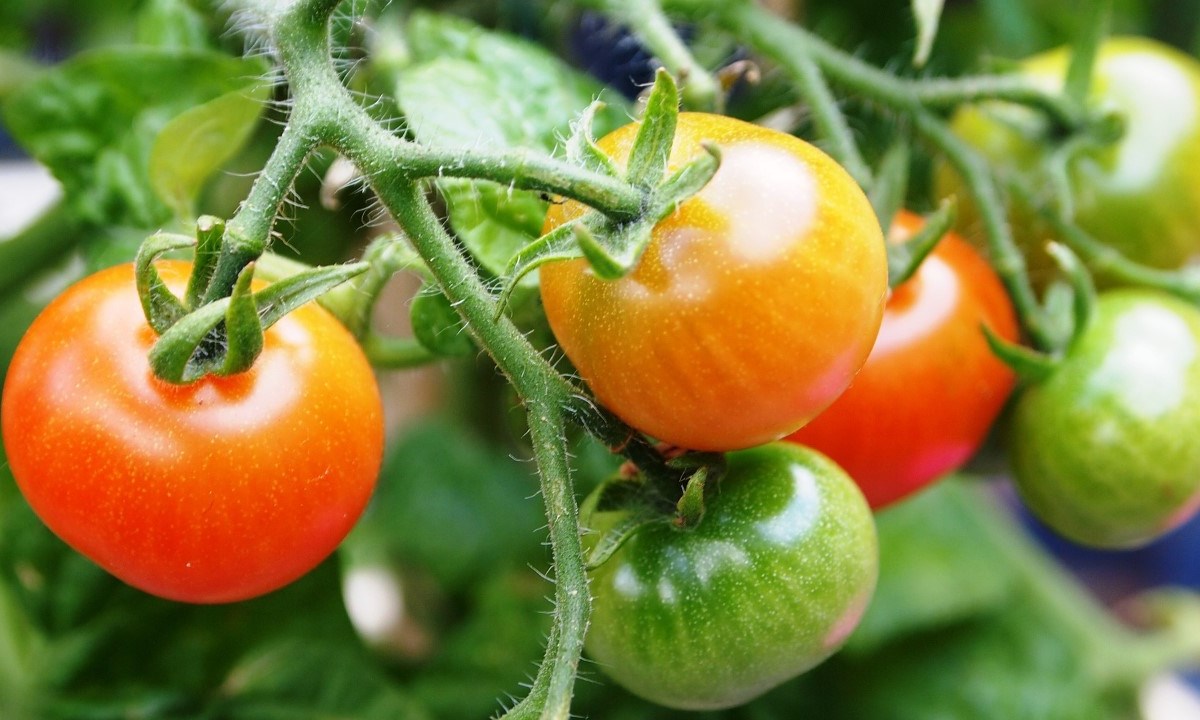It would be a shame to lose one of your tomatoes at this point in the growing season. So watch closely from now on, writes master gardener Brian Minter.
The following column was submitted to the Tri-City News by Brian Minter — master gardener, best-selling author, Order of Canada recipient and co-owner of the Minter Country Garden Store.
This is a critical time for tomatoes in our vegetable gardens.
Some of the larger varieties already have a black spot on the underside of their fruit.
This is called ‘bottom end rot’ and although the tomato is still edible, much of the fruit will not be usable.
This problem is simply a calcium deficiency and can be solved by sprinkling a handful of lime on the soil around the plant.
Tomato-based food, which specifically states on the package that it contains at least three percent calcium, also works.
In our recent heats, we are seeing a lot of curled and twisted tomato leaves.
This situation is not caused by a lack of water but rather by the potato leafroll virus for which the only control is good crop care, including proper watering and supplemental nutrients. At this time of year, I like to use a faster acting liquid food, something like Alaska Organic ‘Mor Bloom 0-10-10’. This formulation also makes it possible to accelerate the calibration and ripening of the fruit.
If you have a large number of tomato vines sprouting all over the place, it’s time to thin some of them out, leaving fewer stems with flowers and fruit to ripen by mid-September.
The dreaded “mildew” is upon us and since August 15 it can appear at any time and blacken an entire plant almost overnight.
To avoid losing your tomato crop, when irrigating, keep water out of foliage and use clear poly to create rain shelter over your plants. If your tomatoes grow in containers, simply move the containers under an eave when it rains. If you are ok with the use of a garden fungicide, Bordo Copper is an effective “mildew” preventative spray when applied as a fine mist to tomato foliage every ten days , from August 15th.
The tomato hornworm is out in force, so keep a close eye on it, along with all of its other chewing friends. Physically removing them is probably best. Go out at night with a flashlight to catch them.
Due to constant watering, the soil in tomato containers has likely been leached of most nutrients, so your plants will need to be fed regularly. If they look really tired, an application of 20-20-20 fertilizer will be a quick fix to tone them up, then apply a 14-14-14 slow-release fertilizer to feed them continuously all summer long. If you prefer to stay organic, then something like Gaia Green 4-4-4 works great too.
If tomato flowers are hesitant to produce fruit, a gentle shake of the stems before 7 a.m. (seriously) will encourage pollination, or you can always use a product called Tomato Fruit Set.
It would be a shame to lose one of your tomatoes at this point in the growing season. So watch closely from now on.

